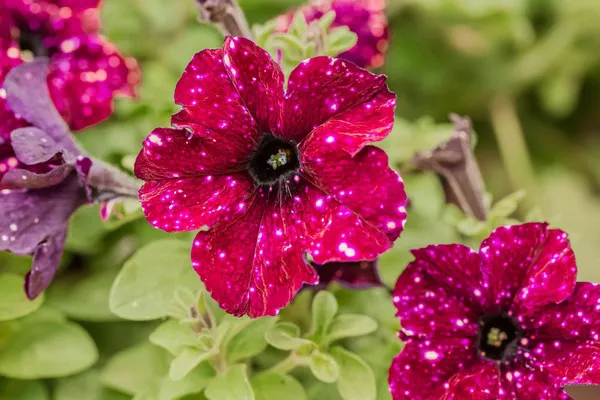Gardening enthusiasts understand the dread that comes with the first frost of the season. As the temperature drops, delicate blooms become vulnerable to damage. If you want to keep your garden vibrant and protected from frost, knowing how to cover your flowers effectively is crucial. In this comprehensive guide, we’ll explore various methods and techniques for shielding your beloved flowers from the chilling effects of frost.
Understanding the Frost Threat: Why Protection Is Essential
Before diving into the art of covering flowers for frost protection, it’s essential to understand why frost poses a risk to your garden. Frost occurs when temperatures drop below freezing (32°F or 0°C). When frost forms on plants, it can damage cell structures, disrupt photosynthesis, and lead to wilting or even plant death. Understanding the severity of the frost threat can motivate you to take proactive steps to protect your garden’s beauty.
Choosing the Right Flowers: Frost-Resistant Varieties
One proactive approach to frost protection is selecting flowers that are naturally more resilient to cold temperatures. Some plant species have developed mechanisms to withstand chilly nights, making them excellent choices for frost-prone regions. Here are some frost-resistant flowers to consider for your garden:
1. Pansies: These cheerful blooms can endure light frosts and continue to add vibrant colors to your garden.
2. Snapdragons: Known for their tall spikes of colorful flowers, snapdragons can tolerate chilly temperatures.
3. Violas: Similar to pansies, violas are cold-hardy and can thrive in cool weather.
4. Calendulas: With their bright yellow and orange petals, calendulas are tough enough to endure light frosts.
5. Primroses: These early spring bloomers are frost-resistant and offer a burst of color to your garden.
Methods of Covering Flowers for Frost Protection
Now that you’ve selected frost-resistant flowers and understand the frost threat, let’s explore various methods of covering your blooms to protect them from frost:
1. Frost Cloth or Blankets: Frost cloth, also known as row cover fabric, is a lightweight, breathable material designed to protect plants from frost. It provides an insulating barrier while allowing air, sunlight, and moisture to reach the plants. Simply drape it over your flowers and secure the edges to the ground with rocks or stakes.
2. Plastic Sheeting: In a pinch, clear plastic sheeting can be used to cover plants. However, it’s essential to secure the plastic above the plants to prevent direct contact, as plastic can transmit cold temperatures. Plastic should be removed during the day to avoid overheating.
3. Cardboard Boxes: For individual plants or small groupings, cardboard boxes can be repurposed as protective shields. Place them over your flowers in the evening, ensuring they don’t touch the plants, and remove them during the day.
4. Cloches: Cloches are transparent covers made of glass or plastic that are placed over individual plants. They create a mini greenhouse effect, trapping heat and protecting your flowers from frost.
5. Bed Sheets and Blankets: If you’re in a bind and don’t have specialized frost cloth, old bed sheets or blankets can provide temporary protection. Just be sure to remove them during the day to allow sunlight in.
6. Mulch: Applying a layer of mulch around the base of your plants can help regulate soil temperature and prevent frost from penetrating the ground. This is especially effective for protecting root systems.
7. Watering: Oddly enough, watering your plants before a frost can offer some protection. Wet soil retains heat better than dry soil, helping to keep the immediate area around your flowers slightly warmer.
8. Christmas Lights: String lights, such as incandescent Christmas lights, emit a small amount of heat. Placing them among your flowers can provide some warmth and frost protection.
Properly Covering Your Flowers: Best Practices
Regardless of the method you choose, there are some best practices to keep in mind when covering your flowers for frost protection:
1. Timing: Cover your flowers in the evening before temperatures drop. Remove the covers during the day to allow sunlight in and prevent overheating.
2. Securing Edges: Ensure that the covers are adequately secured to the ground to prevent them from blowing away or letting in cold air.
3. Avoid Direct Contact: Make sure that the coverings do not touch the flowers directly, as this can transfer cold temperatures to the plants.
4. Monitor Weather Forecasts: Stay informed about frost warnings in your area so that you can take timely action to protect your flowers.
Conclusion
Protecting your precious blooms from frost is not just about preserving their beauty; it’s about ensuring their health and longevity. Understanding the frost threat, selecting frost-resistant varieties, and employing suitable covering methods are all essential steps to keep your garden thriving through colder seasons. Whether you choose frost cloth, cardboard boxes, or even Christmas lights, the key is to act proactively, following best practices, and staying informed about local weather forecasts. With these measures in place, your garden can remain a vibrant and colorful oasis, even in the face of frosty challenges.


